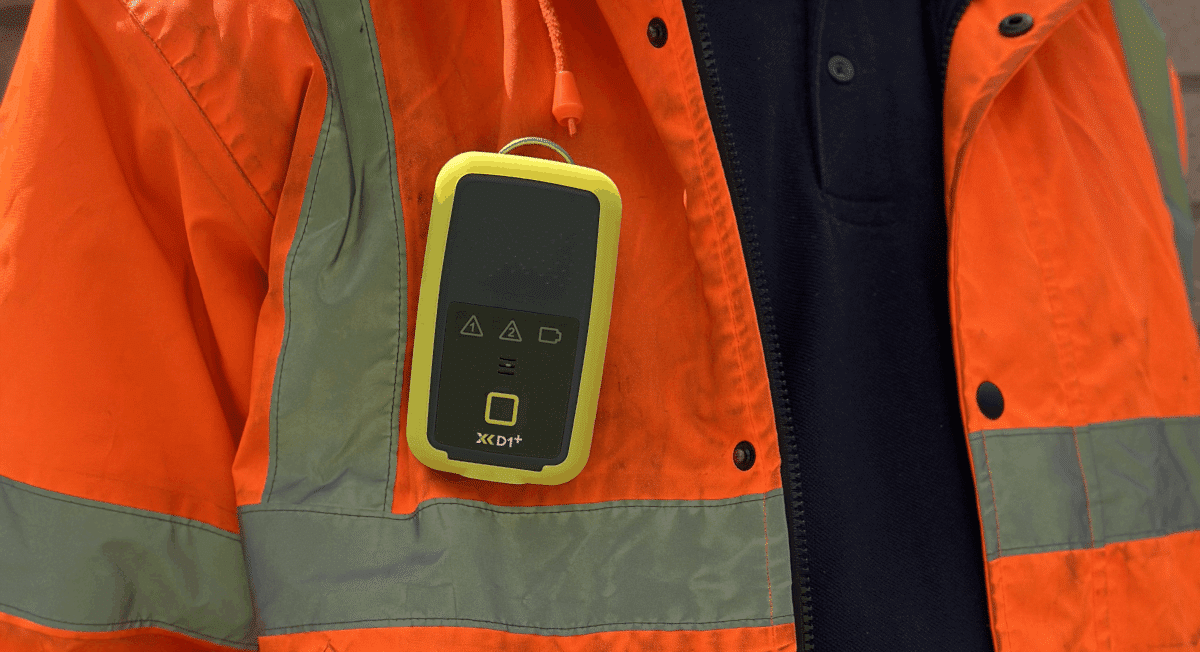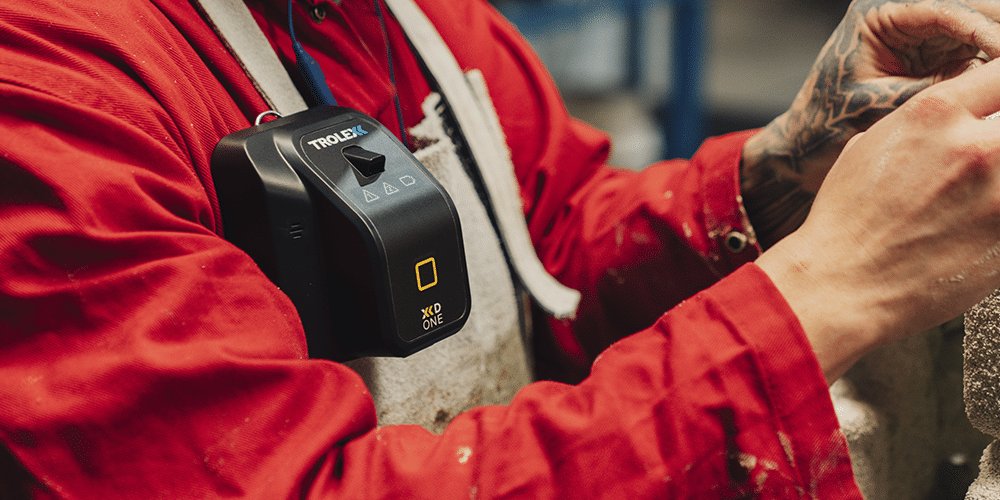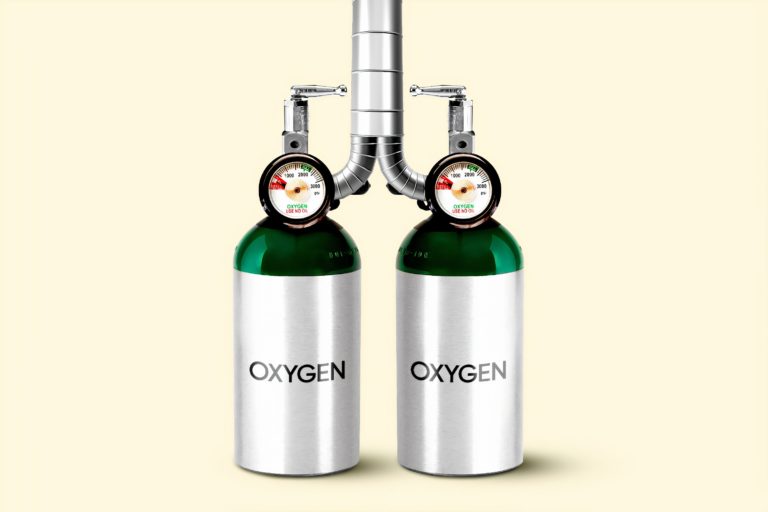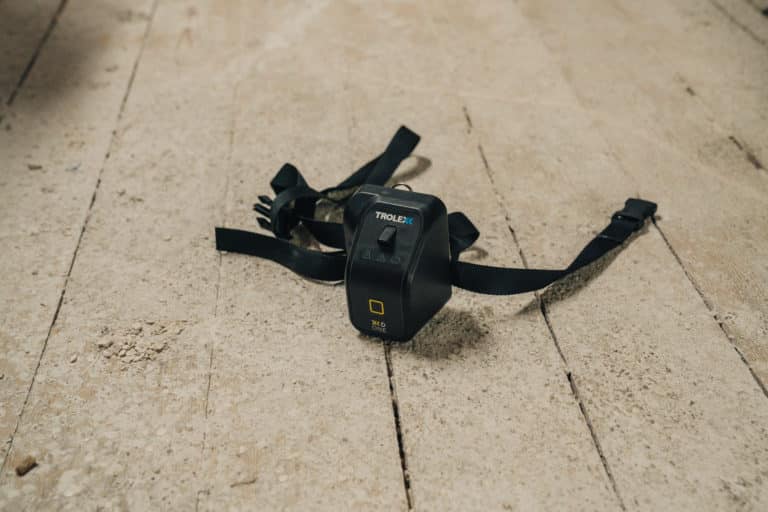With an estimated 1 million people dying globally from the inhalation of dust in occupational environments every year, now is the time to protect your workers. Personal and portable dust monitoring provides a simple solution for all workers at risk of dangerous dusk regardless of their application, processes or industry.
We’re continuously innovating our real-time dust monitoring technology to give you access to the information to effect change and keep your workers safe from hazardous respirable dusts. Which is why we have developed the XD1+ Personal Dust Monitor and the XD ONE Portable Dust Monitor.
Both products provide a unique approach to personal, handheld, portable dust monitoring. It’s dust monitoring that doesn’t get in the way, that’s small and versatile enough to give you the freedom to do your job whilst making zero compromise on accuracy and reliability, remaining easy to use, simple to maintain and cost effective.
Real-time monitoring offers solutions to us in our everyday lives. Whether it’s the real-time alerts that tells you that you’re at risk or in danger, or the subsequent data which provides you accurate information on what you’re monitoring, real-time monitoring has become an essential part of our lives.
But what about real-time monitoring when it comes to enhancing the workforce? You’d rely on real-time monitoring and alarms to tell you there’s a fire in your home, so why wouldn’t you rely on real-time monitoring to tell you if you were a risk as serious to your health at work? You’d rely on real-time data to tell you if you needed to track nutrition or health trends, so why wouldn’t you rely on essential data in real-time in the workplace?
Whether it’s for the health and safety of you and your colleagues, to better understand the processes and efficiency of the business, or just to help aid decisions, real-time monitoring can provide valuable data to workforces across a whole range of industries. Whether you are monitoring for hazardous substances like dust or silica, or monitoring for HAV, sound levels or proximity measures, real-time monitoring can enhance your workforce.
A manufacturer of prestigious natural stone, Burlington Stone have quarried for over 200 years across the English Lake District, extracting and crafting a diverse range of signature British natural slate and stone products.
Individuals across their workforce are often exposed to hazardous substances, most notably airborne dust, including silica dust. Burlington Stone trialed two XD1+ devices on their site for a month to see how real-time, personal dust monitoring would improve their safety processes.
After the trial, we spoke to Health and Safety Manager, Peter Walker, about the success of the trial and some of the major benefits which Burlington Stone’s workforce found deploying XD1+ Personal Dust Monitor units in their day-to-day processes.
The connected XD1+ Personal Dust Monitor and Reactec cloud-based analytics platform has arrived. The Reactec Analytics platform brings exposure data from the XD1+ to life by delivering real-time updates from individual workers and tracking respirable data to determine where the highest concentration of harmful dust exists in your workplace.

With no filters, pumps, tubes, or replaceable parts, the XD1+ Personal Dust Monitor is one of the most compact, lightweight, and easy-to-use real-time personal dust monitors on the market. For such an accurate and reliable unit, it is also essential to be able to access and easily understand the data which the XD1+ is picking up, minute by minute.
Reactec’s cloud-based analytics platform brings XD1+ exposure data to life by delivering real-time updates from individual workers to remote supervisors, whilst tracking respirable data, to determine where the highest concentration of dust exists in your workplace.
With the support of Reactec’s Ecosystem, the XD1+ is transformed into a connected, personalised dust monitoring device that shares invaluable data insight to key stakeholders and figureheads. The XD1+ is integrated into the Reactec Ecosystem using the Reactec RASOR device as an IoT Gateway to Reactec’s powerful A=nalytics software.
By simply connecting your XD1+ unit to the Reactec Analytics platform you are able to:
As strange as this question may sound…have you ever taken a moment to sit down and think about dust? Really think about it? Think about what it actually is, where it comes from, why it exists, and the impact it might have on our lives?
Probably not. And why would anyone? It’s just ‘there’ after all, hanging around, doing its thing. A staple accompaniment to life, only momentarily revealed in a shaft of sunlight or a sneeze, or lying on an expensive piece of machinery waiting to be…dusted.
And while we’re all aware that exposure to dust or particulates can impact health, isn’t it the case that because dust is so small, so ephemeral, and so everywhere, questions of what it actually is, and what it really does, tend to get swept under the carpet?
So here’s a chance to take a closer look at what we’re dealing with when we refer to ‘dust’ and reflect on the significant health implications of exposure to something largely unseen that threatens the lives of many thousands of workers, in many hundreds of different industries around the world.
Dust, or for the purposes of this explanation, particulate matter, is, defined by Greenfacts as, ‘the sum of all solid and liquid particles suspended in air.’
A complex range of components including organic and inorganic particles, such as pollen, soot, smoke, and liquid droplets, particulates can vary greatly in size (from coarse, to fine, to ultrafine), in composition, and in origin.
Many types of particulate are considered hazardous.
Putting dust in the home (composed of about 20–50% dead skin) to one side, about a third of the particulates that make up air pollution are created by vehicles, exhaust fumes, and particles from tyres and brakes.
These coarse particles are made up of broken-up larger particles, with a size ranging from 2.5 to 10 µm (a micron is a millionth of a meter). They are also released by agricultural processes, mining, and burning fossil fuels, as well as naturally through pollen, mould spores, and plants and insects.
While industry and the burning of fossil fuels can produce particles from the release of non-combustible materials, other fine sub-micron particles are produced by the condensation of vapourised materials and atmospheric reactions of sulphur oxides and nitrogen oxides initially released as gases.
These fine particulates between 0.1 µm to 2.5 µm, make up most of the airborne particulate mass and represent the main danger to people living or working in a polluted environment.
Ultra fine particles which are smaller than 0.1 µm make up only a few percent of total particulate mass, though they represent over 90% of the number of particles. They’re largely formed from gases that will often end up coagulating to form a larger particulate.
Worldwide, the main cause of air pollution is coal burning, with dirty air killing more people than smoking, car crashes and HIV/Aids. It also shortens billions of people’s lives by up to six years according to a new report.
The climate crisis too, largely a product of burning fossil fuels, is now making a significant contribution to air pollution through wildfires.
But that doesn’t mean the dangers of inhaling dangerous particulates are limited to smoggy city life or pollution blown cross country from burning forests.
At Trolex, our mission is focused on protecting the millions of people exposed to dangerous workplace dust, mist, fumes, vapour or gas – particulate threats that cover the full spectrum of particulate size.
As we wrote in our The importance of reading the room ebook:
‘Potentially lethal dust is everywhere – from construction dust, to the fibreglass/Glass Reinforced Plastics (GRP) used in loft insulation, and 3D printing that fuses layers and layers of extremely fine dust to create the final shape.
There’s coffee dust, soldering fumes (20% of people soldering or working around solder develop asthma), carbon fibre and plaster related lime, sulphate hemihydrates, silica, and mica dust that leads to asthma, COPD, chronic bronchitis, and emphysema.
There’s cement dust, plus the ubiquitous Amorphous Silica used in car tires, agri chemicals and animal feed, in toothpaste and cosmetics, paint, insulation materials, adhesives, coatings, and printer ink.
There’s biomass dust, dust created by waste disposal and recycling, sawmill wood dust, dust in nail bars, chiropodists, and podiatry clinics, tool sharpening dust and MDF dust particles coated in formaldehyde.’
There’s a huge amount that can be done to protect people from the dangers of inhaling dangerous particulates.
On a national level, governments can actually back up the rhetoric with action, instead of just paying lip service to environmental protection. China’s “war against pollution” that started in 2013 has already, supposedly, reduced levels of fossil fuel pollution by 29%.
But clearly much more needs to be done by politicians and business leaders to transition industry to greener, less damaging energy and manufacturing production. To promote production methods which will reduce the creation of hazardous dust.
Which is why we’re working so hard to both raise awareness of the problem and to put our Trolex AIR XD Dust Monitor, XD ONE Portable Dust Monitor, XD1+ Personal Dust Monitor andAIR XS Silica Monitor in the hands of people on the frontline who we can help protect.
With 12,000 UK, and half a million workers around the world dying every year from preventable diseases directly related to dust and particulate inhalation, our mission is as simple as it’s singularly focused, as it’s important.
It’s this: To educate the world’s construction, mining, tunnelling, heavy and manufacturing industries on the dust and particulate dangers their workers face. Then to make clear the smart, simple, cost effective ways our XD One and other duct monitoring technology can help them protect them. And ultimately…
For every worker exposed to dangerous particulates to have wearable personal dust monitoring equipment by 2031.
Get in touch today to speak to one of our experts about how real-time dust monitoring can help improve your safety processes and keep your workers safe from harmful respirable dusts.
When it comes to occupational health and safety, new real-time dust monitoring such as the XD ONE Portable Dust Monitor can help to make decisions for the hierarchy of controls.
In this e-book we explain how the arrival of affordable, real-time monitoring, and both wearable and portable dust monitoring technologies promote this new awareness of the dangers of dust in a far broader range of working environments.
Employers and the health and safety community are now shifting their attention. Where they’ve traditionally focused on safety, they now look at the major impacts on long-term health associated with working in hazardous environments.
There’s also an increasing awareness of the range of industries that can present long-term health hazards through the inhalation of dangerous dust particles, from traditional industrial environments to commercial activities.
The HSE are reporting an estimated 1.4 million people in the UK report ‘lung or breathing problems that were caused or made worse by work’ – and whilst it’s great that people are starting to pay more attention to this issue, there’s plenty of room for improvement.
Whilst financial costs of lung diseases effect both businesses and individuals, respiratory diseases are more than just an economic drain. It’s a personal tragedy, and there are a whole raft of occupations and jobs where people are exposed to dangerous dust across the world.
However, through the hierarchy of controls, businesses can determine the most effective solutions in order to keep workers protected from dangerous dust exposure.
Knowing that dangerous dust exists, knowing its effects are potentially lethal, and knowing that the damage it causes is preventable, only takes you so far. Knowing how to prevent that harm is what matters, and this is how the hierarchy of controls can help businesses become more efficient, by understanding how effective each method is in benefitting the workforce.
Fortunately, new accurate, real-time, fixed, wearable and portable dust and silica monitoring sensors are leading the detection charge across every use case. By precisely reading the real-time dust load in any given environment, and the enemy now ‘visible’, businesses can begin to apply the hierarchy of controls in a far more meaningful way.
An independent UK agency responsible for the encouragement, regulation and enforcement of workplace health, safety and welfare, and for research into occupational risks in Great Britain, carried out a series of tests on three XD One Portable Dust Monitor units.
They compared them to the following dust monitors: Casella CEL-712 Microdust Pro, a Thermo Scientific MIE Personal DataRam (pDR) 1500, a TSI SidePak AM510.
The key elements of the testing were as follows:
The results from the independent testing demonstrated that the XD ONE performs better than other personal dust monitors on the market. There were five critical messages from the testing as outlined below:
It’s one thing claiming to design, develop and manufacture the world’s most accurate, easy to maintain, and best value wearable dust monitoring device – which we do.
But substantiating that claim?
Backing it up with the facts, with independent verifiable research? Field testing our device and comparing it like-for-like with other similar products to prove our point – is that even possible?
It certainly is.
We can prove that the XD ONE Portable Dust Monitor is the world’s leading wearable dust monitoring system.
Courtesy of The HSE – a completely independent UK Government compliance body and one of the leading organisations of its type in the world – who recently completed a series of dust monitoring tests.
Their tests compared three XD ONE units (to capture a reliable spread of results) with three other commercially available personal dust monitors.
To measure the mean respirable and inhalable dust concentrations, two gravimetric samplers were also tested against the Trolex XD ONE – The GK 2.69 cyclone (BGI by Mesa Labs) and the IOM inhalable sampler (SKC Inc.).
Using Arizona Road Dust, the preferred type of dust for dust monitor trials, testing was undertaken in a 1 m x 1 m x 3 m calm air chamber, at three different dust concentrations – low 2 mg/m³, medium 5 mg/m3, and high 11 mg/m3.

At the medium and highest concentrations, the test lasted for 60 minutes. At the lowest concentration, the test lasted for 120 minutes to make sure enough dust was sampled by the gravimetric samplers to achieve a reliable reading.
Dust concentration was tested in three steps (20 minutes at each stage) from the lowest to the highest. Once at the maximum, the concentration was stepped back down to zero at the same rate.
In a word… impressive.
Saving lives and protecting workers’ health by preventing dust inhalation is a serious business. And so too is putting our technology and our reputation on the line against much bigger and better funded competitors, and vastly more expensive products.
The HSE testing provided a clear endorsement of our ‘marker leader’ claim. But it went further still. Taking into account the XD ONE’s size and weight, cost, ease of set up and ease of maintenance, the tests underlined its practical, performance and competitive advantages in the most emphatic terms.
The results speak for themselves.
When faced with a rational decision between the XD ONE and a competing product – the choice is crystal clear. You’d choose the XD ONE every time.
Working with distributors and partners overseas is how we gain exclusive access to the businesses that need our products to save the lives of their employees.
We value our close partners as much as our own employees and have good relationships that last way beyond the business transaction. This includes trusting our partners to demonstrate our new technology to their customers, in mutual understanding, so our partners and their customers can get ‘up close and personal’ to our XD ONE Portable Dust Monitor and can try it out for themselves in a real-life environment.
Our Belgium, Netherlands and Luxemburg (BeNeLux) distributor, BASystemen, ordered six XD ONE demo units to give to their customers to trial. They landed a few days ago, and their directors are already behind our campaign to get these monitors into the hands of every worker who needs one, and to start saving lives straight away.
Khoa Nguyen is a keen advocate of field trails, and comments ‘we love feedback!’ He intends to lend them out to his customers so they can ‘try out all functionalities’.
The dust monitors themselves have been met with great praise and Khoa says, ‘We truly believe that the XD ONE Portable Dust Monitor is a nice solution to the market needs for a portable dust monitor, which is simple to use, reliable and cost effective’. He adds, “…size is great, weight is perfect and very easy to use.”

Khoa is happy with our partnership, and concludes by saying, “Response is quick and partner conditions are good so both parties benefit long term” and suggests that as a company, BASystemen can “definitely learn from this.”
If you’re a distributor and would like to request demo units of the XD ONE Portable Dust Monitor, please get in touch today.
Congratulations to the New South Wales Government for the foresight and resolution in driving through new legislation to protect workers from the hazards of silica, coal dust, and diesel particulates.
Speaking to Australian Mining, the state’s Deputy Premier and Minister responsible for resources John Barilaro said, “The decision to fast-track these more stringent standards for coal dust exposure was an easy one and is a great example of mine workers, mine operators and government working together to ensure we have robust frameworks in place to address this insidious disease.”
The legislation, which took effect from July 1st 2021, is hugely ambitious too. The legal exposure limit to respirable coal dust was reduced from 2.5 to 1.5 mg/m³ and respirable crystalline silica from 0.1 to 0.05 mg/m³. A new diesel exposure standard of 0.1 mg/m³ commenced 1 February 2021.
Compare the New South Wales Government’s to recent legislation in other parts of the world, and you can see how progressive the New South Wales Government has been. For example, in the United States where OSHA reduced the respirable crystalline silica permissible exposure limit (PEL) affecting the construction, manufacturing, and fracking industries from an allowable average of 250 micrograms per cubic meter of air over an eight-hour shift to 50 micrograms per cubic meter.

In the UK, respirable crystalline silica (RCS) control measures need only be effective in keeping exposure below the Workplace Exposure Limit (WEL) at the old NSW level of 0.1 mg/m³ respirable dust, averaged over eight hours.
With efforts underway to determine whether these levels might be made even more stringent, the good work is clearly an ongoing priority.
As The New South Wales Resources Regulator says in its compliance priority January-June 2021 report. ‘With the implementation of the revised exposure standards for silica and respirable dust, and a new exposure standard for diesel exhaust emissions, airborne contaminants was a priority project between July and December in 2020 and will continue to be a focus area.’
But it’s one thing to bring new, more stringent particulate exposure regulations onto the statute book. It’s another matter altogether making sure they are adhered to.
For a start, guidance needs to be shared with business owners and operators to help them properly implement effective health control plans in the context of the new regulations.
And what about the technical implications? With legal limits (quite rightly) ever shrinking, how can businesses be absolutely confident that the technology they use onsite to measure exposure to harmful dust and particulates is accurate, realistically deployable and affordable?

With much of the legacy technology on the market anything but accurate, realistically deployable and affordable, clearly the challenge for technology companies is to step up and find new ways for industry to meet these new standards.
At Trolex we’ve been working tirelessly on meeting these challenges for years.
And now we have.
It’s called the Trolex real-time dust monitoring range of fixed and wearable dust monitors.
You might also call it an overnight 40-year success story, as we’ve turned our vast experience in environmental monitoring in mining and tunnelling, to designing, manufacturing and distributing world leading dust and particulate monitoring technology.
The Trolex AIR XD Dust Monitor and XD ONE Portable Dust Monitor are both designed to detect even the finest of particulates.
Fixed and wearable, real-time analysis of your working environment from the Trolex dust monitoring range giving you a crystal clear understanding of the real particulate threat you face.
Simple to deploy, easy to maintain and super accurate they deliver a practical and affordable way of protecting your workers AND remaining within the law.
Now, whatever the new legislation and however strictly it’s applied, you can be absolutely sure that you have the technology in place to meet all legal and regulatory responsibilities as well as lead a healthy, happy, motivated workforce.
Don’t take chances. Contact us now to find out more about how our AIR XD and XD ONE real-time dust monitoring products – accurate, simple to use, easy to maintain, real-time particulate detection technology can protect your workers in your hazardous environments.
